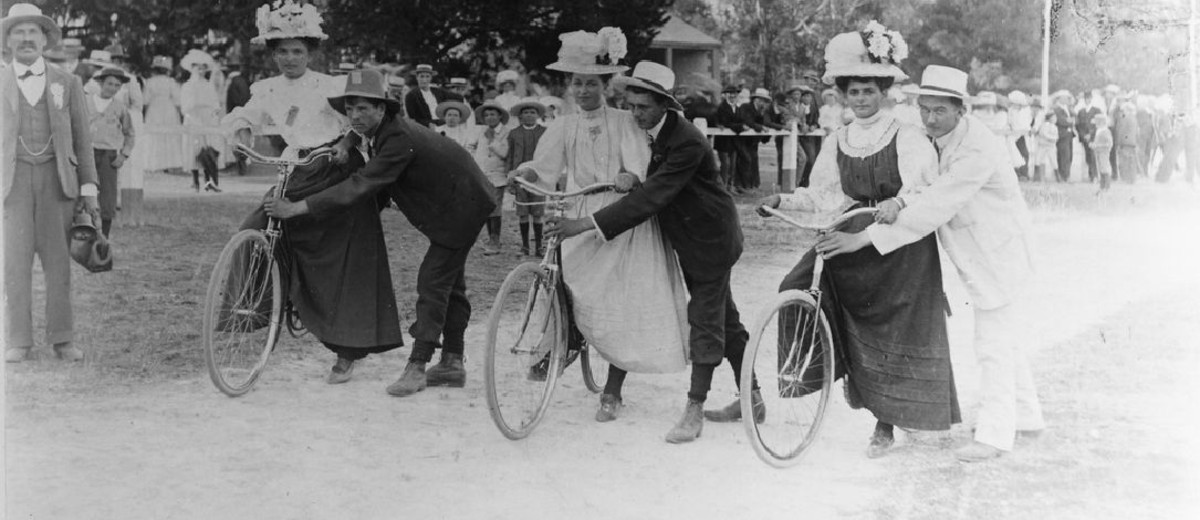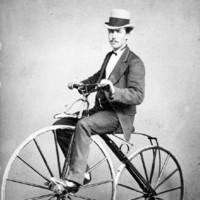Introduced to South Australia in the early 1860s, bicycle design followed North American and European styles. Velocipedes or ‘boneshakers’, with two wooden wheels, iron frames, and pedals on the front wheel, were used for transport and sport by young men. Bicycles were both imported and locally made by such firms as F. Moeller and Duncan Fraser. By 1874 bicycles were sufficiently popular for them to be banned from footpaths.
The ordinary, high wheeler or ‘penny-farthing’, with solid rubber tyres and a large front wheel to provide a higher gear, reached South Australia in the late 1870s. Penny-farthing riders formed racing and recreational clubs, members wearing military-like uniforms. By 1888 Adelaide had four clubs, including the South Australian Bicycle Club and the Norwood Cycling Club.
The advent of the safety bicycle, with smaller wheels and pneumatic tyres, made cycling popular, and also feasible for women. From 1896 to 1899 the SA Cyclist promoted the health benefits of cycling, noting the freedom that cycling gave to women, who now enjoyed their own clubs.
Workers prized bicycles during the Great Depression and the 1940s. Bicycle paths, closed in the 1960s, were built along Port Road and Anzac Highway. Adelaide bicycle manufacturers such as Super Elliotts and Lewis Brothers supported racing events and used prominent cyclists, among them Dean Toseland, to promote their products. Well-known cyclist Bert Standish also turned to making bicycles. The widespread acceptance of the car in the 1950s largely relegated bicycles to children. But in the 1970s the ten-speed bicycle with drop handlebars was the focus of a revival in popularity. Mountain bikes were introduced during the 1990s.
In the early 1980s the state government established the State Bicycle Committee, superseded in 1999 by the State Bicycle Council, to further cycling interests. With its flat terrain and relatively uncongested traffic, Adelaide remains an ideal place to cycle.

Hi Darren,
I'm afraid as a government organisation we're not able to give valuations. You would need to take your bone shaker to a specialist dealer for an estimate, or send them a photo and details. The Federal Government does list some valuers on its Cultural Gift Program website https://www.arts.gov.au/documents/cultural-gifts-program-list-approved-v... but you will find more in the phone book or through a search online.
I believe I have a bone shaker penny farthing with wooden wheels and Steel band . It is red in colour and reasonable condition . What value would be put on this item. The Handle bars are about 4 ft six inches high. Any assistance would be appreciated
Adelaide City Archives 1058, Item No.7: Agreements with Corporation Officers re: Bicycles 1900–1950s
Broomhill, Ray, Unemployed workers: a social history of the Great Depression in Adelaide (Brisbane: University of Queensland Press, 1978)
Fitzpatrick, Jim, ‘Anzacs at War on Bicycles’, Journal of the Royal Historical Society of Victoria 54:3, 1983, pp31–38




Add your comment